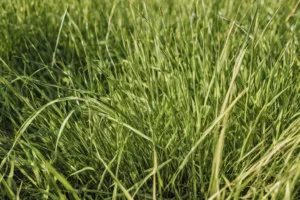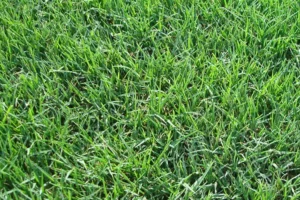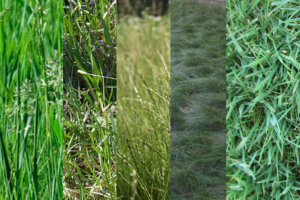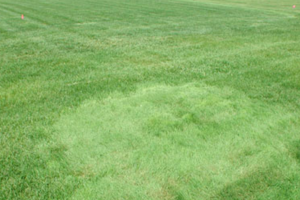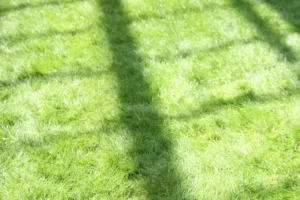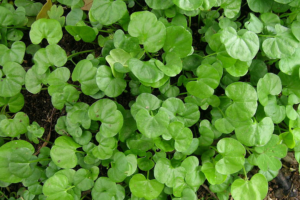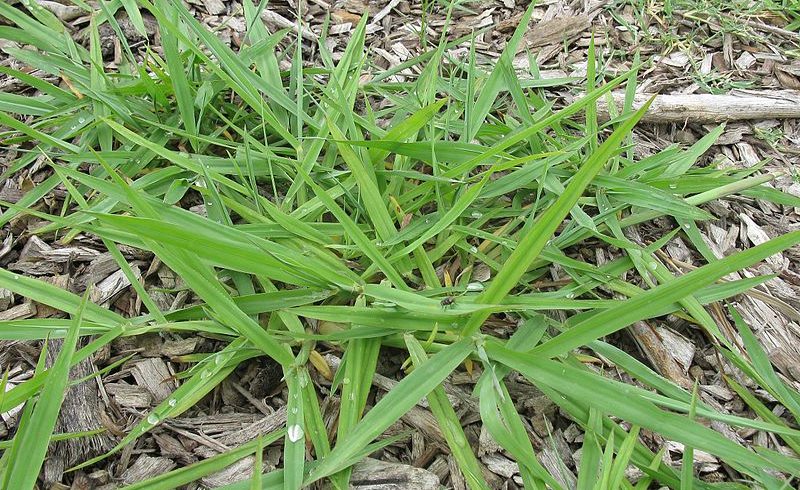
Introduction
Paspalum grass, or Bahia grass or Dallisgrass, is a warm-season perennial grass native to tropical and subtropical regions of the Americas. It’s known for its tolerance to various conditions, including heat, drought, and salinity, making it a versatile choice for many applications. Paspalum grass is commonly used in pastures, lawns, and golf courses, and it’s also essential for erosion control and as a habitat for wildlife.
The importance of Paspalum grass lies in its adaptability and resilience. Its ability to thrive in less-than-ideal conditions makes it a valuable resource in areas where other grasses might struggle. Whether providing a lush, green lawn in the summer heat, creating a smooth playing surface on a seaside golf course, or stabilizing soil on a steep embankment, Paspalum grass is up to the task.
Importance and Uses of Paspalum Grass
Paspalum grass is highly valued for its many uses. In agriculture, it’s often used as a forage grass for grazing animals, thanks to its ability to produce a high yield of nutritious grass even in poor soil conditions. Its deep root system and rapid growth rate make erosion control practical, helping stabilize soil and prevent runoff.
Paspalum grass is a popular choice for lawns and turf in residential and commercial landscaping due to its attractive appearance and low maintenance requirements. It’s particularly well-suited to coastal areas, as it can tolerate salty conditions that would damage many other types of grass. For the same reason, Paspalum grass is increasingly used on golf courses, especially near the ocean. Its ability to withstand heavy foot traffic and close mowing makes it ideal for creating smooth, durable playing surfaces.
Historical Background of Paspalum Grass
Paspalum grass, or Bahia grass or Dallisgrass is a genus of plants in the grass family. The genus includes over 300 species, many of which are native to the tropical and subtropical regions of the Americas. The name “Paspalum” is derived from the Greek word “paspa,” which means “millet,” reflecting the grain-like appearance of some species.
The use of Paspalum grass dates back centuries. Indigenous peoples in the Americas recognized the value of this hardy grass and used it for various purposes. Some species were used for food, while others were used for thatching roofs or weaving mats. With the arrival of European settlers, Paspalum grass was introduced to other parts of the world, where it quickly adapted to various climates and conditions.
Regions Where Paspalum Grass is Native
Paspalum grass is native to the tropical and subtropical regions of the Americas, from the southern United States to Argentina. It thrives in various habitats, from wetlands and riverbanks to grasslands and coastal areas. Some species are also found in Africa, Asia, and Australia, where they have been intentionally or accidentally introduced.
Despite its tropical origins, Paspalum grass is remarkably adaptable and can thrive in various climates. Some species are drought-tolerant and can survive in arid regions, while others can tolerate salty conditions and thrive in coastal areas. This adaptability, combined with its rapid growth and attractive appearance, has led to the widespread use of Paspalum grass in lawns, golf courses, and pastures worldwide.
Description of Various Paspalum Species
The Paspalum genus is diverse, with over 300 species that vary in appearance and growth habits. Some of the most well-known species include Paspalum dilatatum (Dallisgrass), Paspalum notatum (Bahia grass), and Paspalum vaginatum (seashore paspalum).
Dallisgrass is a perennial grass native to South America but has spread to other parts of the world. It is known for its high tolerance to drought and ability to grow in various soil types. Dallisgrass has a coarse texture and forms clumps, making it less desirable for lawns but useful for pastures and hay.
Bahia grass, native to Brazil, is a tough, perennial grass used for lawns, pastures, and erosion control in warm climates. It is drought-resistant and can grow in poor, sandy soils. Bahia grass has a deep root system, which makes it a good choice for stabilizing soil.
Seashore paspalum is a warm-season grass native to coastal regions in the Americas. It is highly salt-tolerant, making it an excellent choice for golf courses and lawns in coastal areas. Seashore paspalum has a fine texture and can tolerate low mowing, making it ideal for creating smooth, attractive turf.
Unique Characteristics of Each Species
Each species of Paspalum grass has unique characteristics that make it suited to different uses. For example, Dallisgrass, with its high drought tolerance and ability to grow in various soil types, is often used in pastures and hay production. Its coarse texture and clumping growth habit make it less suitable for lawns or golf courses.
However, with its deep root system and toughness, Bahia grass is often used for lawns and pastures in warm climates, especially in poor, sandy soils. It is also used for erosion control due to its ability to stabilize the soil.
Seashore paspalum stands out for its high salt tolerance, making it the grass for golf courses and lawns in coastal areas. Its fine texture and ability to tolerate low mowing also make it ideal for creating smooth, attractive turf. Despite its preference for coastal conditions, seashore paspalum can also adapt to various other environments, making it a versatile choice for many applications.
Ideal Conditions for Paspalum Growth
Paspalum grass is a warm-season grass that thrives in hot weather and grows most actively during the late spring and summer months. It prefers full sun but can tolerate some shade. Paspalum grass is also known for its ability to withstand various soil conditions, from sandy or clay soils to those with poor fertility. However, it does best in well-drained soils.
While Paspalum grass is drought-tolerant, it prefers regular watering for optimal growth. Regarding temperature, Paspalum grass does well in areas with mild winters and hot summers. It’s also salt-tolerant, making it a good choice for coastal areas. However, it’s important to note that the specific growth conditions can vary depending on the species of Paspalum grass.
Step-by-Step Guide to Planting and Cultivating Paspalum Grass
Planting Paspalum grass starts with preparing the soil. This involves removing existing vegetation and loosening the soil with a tiller or garden fork. Once the soil is prepared, the Paspalum seeds can be spread evenly across the surface. It’s essential to keep the soil moist until the seeds germinate, which usually takes two weeks.
After the grass has been established, it requires regular maintenance to keep it healthy. This includes regular mowing to maintain the desired height, watering during dry periods, and fertilizing as needed to provide necessary nutrients. Paspalum grass can also benefit from aeration, which helps to improve soil structure and allows water and nutrients to reach the grass roots more effectively.
Common Challenges and Solutions in Paspalum Cultivation
Like any plant, Paspalum grass can face various challenges, from pests and diseases to unfavorable weather conditions. Common pests of Paspalum grass include billbugs and white grubs, which can cause damage by feeding on the grassroots. Diseases such as dollar spots and brown patches can also affect Paspalum grass.
To manage these challenges, it’s essential to maintain good cultural practices, such as proper watering, mowing, and fertilization. In some cases, it may be necessary to use pesticides or fungicides to control pests and diseases. However, these should be used as a last resort and by the manufacturer’s instructions.
Another challenge in growing Paspalum grass can be competition from weeds. Regular mowing can help to control weeds by preventing them from setting seed. In addition, maintaining a dense, healthy stand of Paspalum grass can help to crowd out weeds and reduce their ability to establish.
Benefits of Paspalum Grass for Golf Courses
Paspalum grass has several characteristics that make it an excellent choice for golf courses. One of its key benefits is its ability to tolerate low mowing heights. This allows for the creation of smooth, even playing surfaces that are ideal for golf greens. Paspalum grass also has a dense growth habit, which helps to resist wear and tear from foot traffic and golf cart use.
Another significant advantage of Paspalum grass for golf courses is its salt tolerance. This makes it an excellent choice for coastal golf courses, where salty air and soil conditions can be challenging for other grass species. Paspalum grass can even be irrigated with saltwater, making it a sustainable choice for golf courses in areas with limited freshwater resources.
Maintenance of Paspalum Grass in Golf Courses
Maintaining Paspalum grass on a golf course requires careful attention to mowing, watering, and fertilization. Paspalum grass should be mowed regularly to maintain the desired height and promote dense growth. The specific mowing height will depend on the use of the grass area; greens are typically mowed very short, while fairways and roughs are left longer.
Watering should be done as needed to keep the grass healthy without overwatering. Paspalum grass is drought-tolerant, but it will perform best with regular watering. Fertilization should be done based on soil tests to provide nutrients without over-fertilizing.
Pest and disease management is also essential in Paspalum grass maintenance on golf courses. Regular monitoring can help detect any issues early, and appropriate treatments can be applied as needed.
Case Studies of Famous Golf Courses Using Paspalum Grass
Paspalum grass is used on many famous golf courses around the world, particularly those in coastal areas. For example, the Ocean Course at Kiawah Island Golf Resort in South Carolina, USA, uses Paspalum grass for its fairways, tees, and greens. The grass’s salt tolerance makes it an excellent choice for this seaside course.
Another notable example is the Abu Dhabi Golf Club in the United Arab Emirates, which uses Paspalum grass for its fairways and roughs. The grass’s ability to tolerate the hot, arid conditions of the Middle East has made it a successful choice for this course.
These case studies demonstrate the versatility and resilience of Paspalum grass and its ability to perform well under various conditions. Whether on a seaside course in South Carolina or a desert in the Middle East, Paspalum grass delivers a high-quality playing surface for golfers.
Benefits of Paspalum Grass for Residential Lawns
Paspalum grass is a popular choice for residential lawns due to its attractive appearance and low maintenance requirements. Its dense growth habit creates a thick, lush lawn that can outcompete weeds and resist wear and tear from foot traffic. Paspalum grass also has a deep root system, which helps it to withstand drought conditions and recover quickly from damage.
Another significant benefit of Paspalum grass for residential lawns is its adaptability. It can thrive in various soil types, including sandy and clay soils, and tolerate acidic and alkaline pH levels. This makes Paspalum grass a versatile choice that can be successful in various lawn conditions.
Maintenance Tips for Paspalum Lawns
Maintaining a Paspalum lawn involves regular mowing, watering, and fertilization. Paspalum grass should be mowed regularly to maintain a height of about 2 to 3 inches. Regular mowing helps to promote dense growth and prevent the establishment of weeds.
Watering should be done as needed to keep the grass healthy. While Paspalum grass is drought-tolerant, it will look and perform its best with regular watering. During dry periods, it may be necessary to water the lawn once or twice a week.
Fertilization should be done based on soil tests to provide nutrients without over-fertilizing. A balanced lawn fertilizer can be used, or a specific Paspalum grass fertilizer can be used for optimal results.
Comparison with Other Popular Lawn Grasses
Paspalum grass stands out for its adaptability and low maintenance requirements compared to other popular lawn grasses. Paspalum grass can thrive in various conditions, unlike some grasses requiring specific soil types or pH levels. This makes it a good choice for homeowners who want a beautiful lawn without extensive maintenance.
In terms of appearance, Paspalum grass has a fine to medium texture and bright green color that can be very attractive. It also has a dense growth habit that can create a thick, lush lawn. However, it’s important to note that Paspalum grass does require regular mowing to maintain its appearance, and it can become invasive if not properly managed.
Common Pests and Diseases
Like all grass species, Paspalum is susceptible to various pests and diseases. Common pests include armyworms, cutworms, and sod webworms, which can cause damage by feeding on the grass blades. Other pests, like mole crickets and white grubs, feed on the roots of the grass, which can cause the grass to wilt and die.
In addition to pests, several diseases can affect Paspalum grass. These include dollar spot, leaf spot, and rust. Dollar spot is a fungal disease that causes small, round, straw-colored spots on the grass blades. Leaf spot causes dark, water-soaked spots on the leaves, while rust causes yellow to orange pustules on the grass blades.
Prevention and Treatment Methods
Preventing pests and diseases in Paspalum grass involves maintaining good cultural practices. This includes proper watering, mowing, and fertilization. Overwatering or underwatering can stress the grass and make it more susceptible to pests and diseases. Similarly, mowing too short can stress the grass and make it more susceptible to disease.
If pests or diseases do occur, there are several treatment options available. For pests, this may include the use of pesticides. However, pesticides should be used as a last resort and by the manufacturer’s instructions. For diseases, fungicides may be used. Again, these should be used as a last resort and by the manufacturer’s instructions.
Impact of Pests and Diseases on Paspalum Grass Quality
Pests and diseases can significantly impact the quality of Paspalum grass. They can cause damage to the grass blades, roots, or both, resulting in wilting, yellowing, or death of the grass. This can reduce the aesthetic appeal of the grass and can also affect its ability to withstand wear and tear.
In addition to the direct damage caused by pests and diseases, they can also stress the grass and make it more susceptible to other problems. For example, grass weakened by a pest infestation may be more susceptible to drought stress or damage from foot traffic. Therefore, it’s essential to monitor for pests and diseases and to take action at the first sign of trouble.
Environmental Impact of Paspalum Grass
Like other plant species, Paspalum grass interacts with its environment in various ways. One of the critical environmental impacts of Paspalum grass is related to its water usage. According to a study, Paspalum grass has effectively utilized “produced water” – a byproduct of oil and gas extraction processes. This ability not only helps in the efficient use of water resources but also aids in managing this byproduct, which can be harmful to the environment if not correctly handled.
Another environmental aspect of Paspalum grass is its adaptability to different soil types and conditions. This characteristic allows it to grow in areas where other grass species may struggle, thereby preventing soil erosion and contributing to soil health. However, it’s important to note that introducing Paspalum grass into non-native environments should be done carefully, as it can become invasive and outcompete native plant species.
Case Studies on Paspalum’s Environmental Impact
Several studies have been conducted to understand the environmental impact of Paspalum grass. For instance, the University of Florida has researched Seashore Paspalum, a species of Paspalum grass. According to their study, Seashore Paspalum is well-suited to Florida’s climate and soil conditions. It’s also noted for its ability to tolerate salt, making it a good choice for coastal areas.
Another study evaluated the performance of Seashore Paspalum under shade in multi-environment trials. The results showed that certain breeding lines of Seashore Paspalum performed well under varying degrees of shade, indicating its potential for use in landscapes with diverse light conditions.
These studies highlight the adaptability of Paspalum grass and its potential benefits in different environmental contexts. However, further research is needed to understand this versatile grass species’ environmental impacts fully.
Paspalum Grass in Pastures and Hay Production
Paspalum grass is famous for pastures and hay production, particularly in warm climates. Its rapid growth and ability to withstand various soil conditions make it a reliable and productive choice for farmers and ranchers. Paspalum grass is also known for its high nutritional value, making it a good choice for feeding livestock.
In addition to its use in pastures, Paspalum grass is also commonly used for hay production. Its rapid growth allows for multiple cuttings in a single growing season, and its high nutritional value makes it a desirable feed for livestock. However, it’s important to note that the quality of Paspalum hay can vary depending on the specific species and growing conditions.
Maintenance and Management of Paspalum in Pastures and Hay Production
Maintaining Paspalum grass in pastures and for hay production involves regular mowing, watering, and fertilization. Regular mowing helps to promote dense growth and prevent the establishment of weeds. During dry periods, it may be necessary to water the pasture or hay field to ensure the health and productivity of the Paspalum grass.
Fertilization should be done based on soil tests to provide nutrients without over-fertilizing. Over-fertilization can lead to excessive growth, which can be challenging to manage and can also lead to environmental problems such as nutrient runoff.
In addition to these basic maintenance tasks, managing Paspalum grass in pastures and hay production may involve pest and disease management. Regular monitoring can help detect any issues early, and appropriate treatments can be applied as needed.
Case Studies of Paspalum Use in Pastures and Hay Production
Paspalum grass is used in pastures and for hay production in many parts of the world. For example, in the southern United States, Paspalum grass is commonly used in pastures due to its ability to withstand the region’s hot, humid climate. In South America, where many species of Paspalum grass are native, it is a common choice for pastures and hay production.
These case studies demonstrate the versatility and productivity of Paspalum grass in agricultural settings. However, it’s important to note that the success of Paspalum grass in pastures and hay production can depend on various factors, including the specific species of Paspalum grass, the local climate and soil conditions, and the management practices used.
Paspalum Grass in Pastures and Hay Production
Paspalum grass is famous for pastures and hay production, particularly in warm climates. Its rapid growth and ability to withstand various soil conditions make it a reliable and productive choice for farmers and ranchers. Paspalum grass is also known for its high nutritional value, making it a good choice for feeding livestock.
In addition to its use in pastures, Paspalum grass is also commonly used for hay production. Its rapid growth allows for multiple cuttings in a single growing season, and its high nutritional value makes it a desirable feed for livestock. However, it’s important to note that the quality of Paspalum hay can vary depending on the specific species and growing conditions.
Maintenance and Management of Paspalum in Pastures and Hay Production
Maintaining Paspalum grass in pastures and for hay production involves regular mowing, watering, and fertilization. Regular mowing helps to promote dense growth and prevent the establishment of weeds. During dry periods, it may be necessary to water the pasture or hay field to ensure the health and productivity of the Paspalum grass.
Fertilization should be done based on soil tests to provide nutrients without over-fertilizing. Over-fertilization can lead to excessive growth, which can be challenging to manage and can also lead to environmental problems such as nutrient runoff.
In addition to these basic maintenance tasks, managing Paspalum grass in pastures and hay production may involve pest and disease management. Regular monitoring can help detect any issues early, and appropriate treatments can be applied as needed.
Case Studies of Paspalum Use in Pastures and Hay Production
Paspalum grass is used in pastures and for hay production in many parts of the world. For example, in the southern United States, Paspalum grass is commonly used in pastures due to its ability to withstand the region’s hot, humid climate. In South America, where many species of Paspalum grass are native, it is a common choice for pastures and hay production.
These case studies demonstrate the versatility and productivity of Paspalum grass in agricultural settings. However, it’s important to note that the success of Paspalum grass in pastures and hay production can depend on various factors, including the specific species of Paspalum grass, the local climate and soil conditions, and the management practices used.
Potential Uses and Developments
As we look to the future, the potential uses and developments for Paspalum grass are promising. With its high tolerance for various environmental conditions and its adaptability to different soil types, Paspalum grass is being considered for use in various applications beyond lawns and golf courses. For example, its ability to grow in salty conditions makes it a potential candidate for reclamation projects in coastal areas affected by saltwater intrusion.
Regarding developments, researchers are continually working on breeding new varieties of Paspalum grass that offer improved characteristics. These may include excellent disease resistance, improved drought tolerance, or enhanced aesthetic qualities. As these new varieties become available, we can expect Paspalum grass to be used in even more diverse settings.
Sustainability
The future of Paspalum grass is also closely tied to its environmental impact and sustainability. As we become more aware of the need to conserve water and protect our environment, the characteristics of Paspalum grass that contribute to its environmental friendliness become increasingly important. Its ability to thrive with less water than many other grass species, for example, makes it a more sustainable choice in regions where water is scarce.
Furthermore, Paspalum’s ability to grow in various soil types, including those with poor fertility, can help improve soil health and prevent erosion. Its deep root system also helps it sequester carbon, contributing to efforts to combat climate change. As we move forward, these environmental benefits will likely play a significant role in the increasing use of Paspalum grass.
Challenges and Opportunities
Despite its many benefits, Paspalum grass also faces challenges in the future. One of the main challenges is its potential to become invasive in certain conditions. This is mainly a concern when Paspalum grass is introduced into areas that are not native. Careful management is needed to prevent it from out-competing native plant species.
On the other hand, these challenges also present opportunities. For example, developing new varieties of Paspalum grass that are less invasive or have other improved characteristics can help mitigate these challenges. Furthermore, increased awareness and understanding of how to manage Paspalum grass effectively can also help ensure that it is used to maximize its benefits while minimizing its potential downsides.
Links to the case studies mentioned:
- Bahiagrass and other Paspalum species in the Southern United States
- The Management and Use of Bahiagrass in South America
Please note that while these links lead to the official websites of the respective studies, they need to provide specific details about using Paspalum grass. You may need to consult the studies directly or contact the authors for more detailed information.

Bob Green, a passionate lawn care enthusiast with over two decades of landscaping experience, is this website’s proud owner. His vast knowledge of horticulture and dedication to helping homeowners maintain beautiful lawns are reflected in the valuable content he shares on his platform. John has always been interested in Agrostology.









